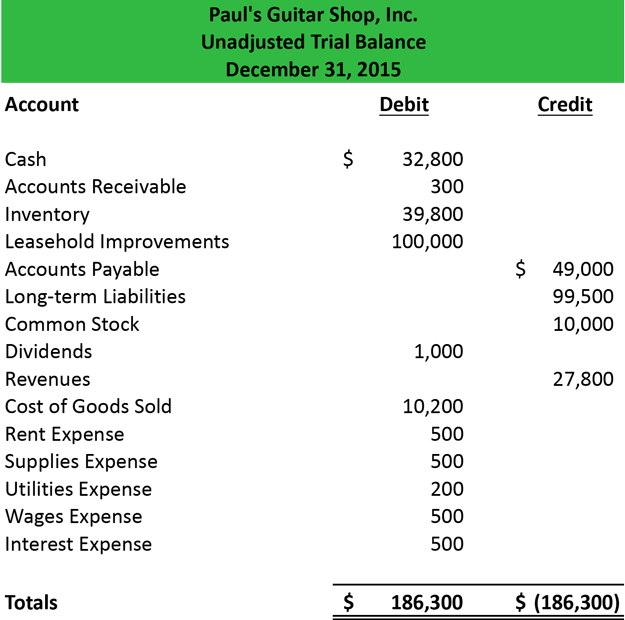What is a Trial Balance?
Contents
A trial balance sheet is a report that lists the ending balances of each account in the chart of accounts in balance sheet order. Bookkeepers and accountants use this report to consolidate all of the T-accounts into one document and double check that all transactions were recorded in proper journal entry format.
Bookkeepers typically scan the year-end trial balance for posting errors to ensure that the proper accounts were debited and credited while posting journal entries. Internal accountants, on the other hand, tend to look at global trends of each account. For instance, they might notice that accounts receivable increased drastically over the year and look into the details to see why.
Tax accountants and auditors also use this report to prepare tax returns and begin the audit process. The TB format lends itself to a wide variety of uses.
Trial Balance Format
The trial balance format is easy to read because of its clean layout. It typically has four columns with the following descriptions: account number, name, debit balance, and credit balance. It’s always sorted by account number, so anyone can easily scan down the report to find an account balance. This order also tends to be in balance sheet order since the average chart of accounts follows the accounting equation starting with the assets.
Not all accounts in the chart of accounts are included on the TB, however. Usually only active accounts with year-end balance are included in the TB because accounts with zero balances don’t make it on the financial statements. For example, if a company had a vehicle at the beginning of the year and sold it before year-end, the vehicle account would not show up on the year-end report because it’s not an active account.
The report also totals the debit and credit columns at the bottom. As with all financial accounting, the debits must equal the credits. If it’s out of balance, something is wrong and the bookkeeper must go through each account to see what got posted or recorded incorrectly.
This step saves a lot time for accountants during the financial statement preparation process because they don’t have to worry about the balance sheet and income statement being off due to an out-of-balance error. Keep in mind, this does not ensure that all journal entries were recorded accurately. It just means that the credits and debits balance.
A journal entry error can still exist. For instance, in our vehicle sale example the bookkeeper could have accidentally debited accounts receivable instead of cash when the vehicle was sold. The debits would still equal the credits, but the individual accounts are incorrect. This type of error can only be found by going through the trial balance sheet account by account.
Since most companies have computerized accounting systems, they rarely manually create a TB or have to check for out-of-balance errors. They computer system does that automatically.
Preparation and Process
How is the Trial Balance Prepared?
When the accounting system creates the initial report, it is considered an unadjusted trial balance because no adjustments have been made to the chart of accounts. This is simply a list of all the account balances straight out of the accounting system.
As the bookkeepers and accountants examine the report and find errors in the accounts, they record adjusting journal entries to correct them. After these errors are corrected, the TB is considered an adjusted trial balance.
We still aren’t done with this report yet though. The errors have been identified and corrected, but the closing entries still need to be made before this TB can used to create the financial statements. After the closing entries have been made to close the temporary accounts, the report is called the post-closing trial balance.
Let’s take a look at an example.
Example
How to use the Trial Balance
Here’s an example trial balance. As you can see, the report has a heading that identifies the company, report name, and date that it was created. The accounts are listed on the left with the balances under the debit and credit columns.

Since the debit and credit columns equal each other totaling a zero balance, we can move in the year-end financial statement preparation process and finish the accounting cycle for the period.




